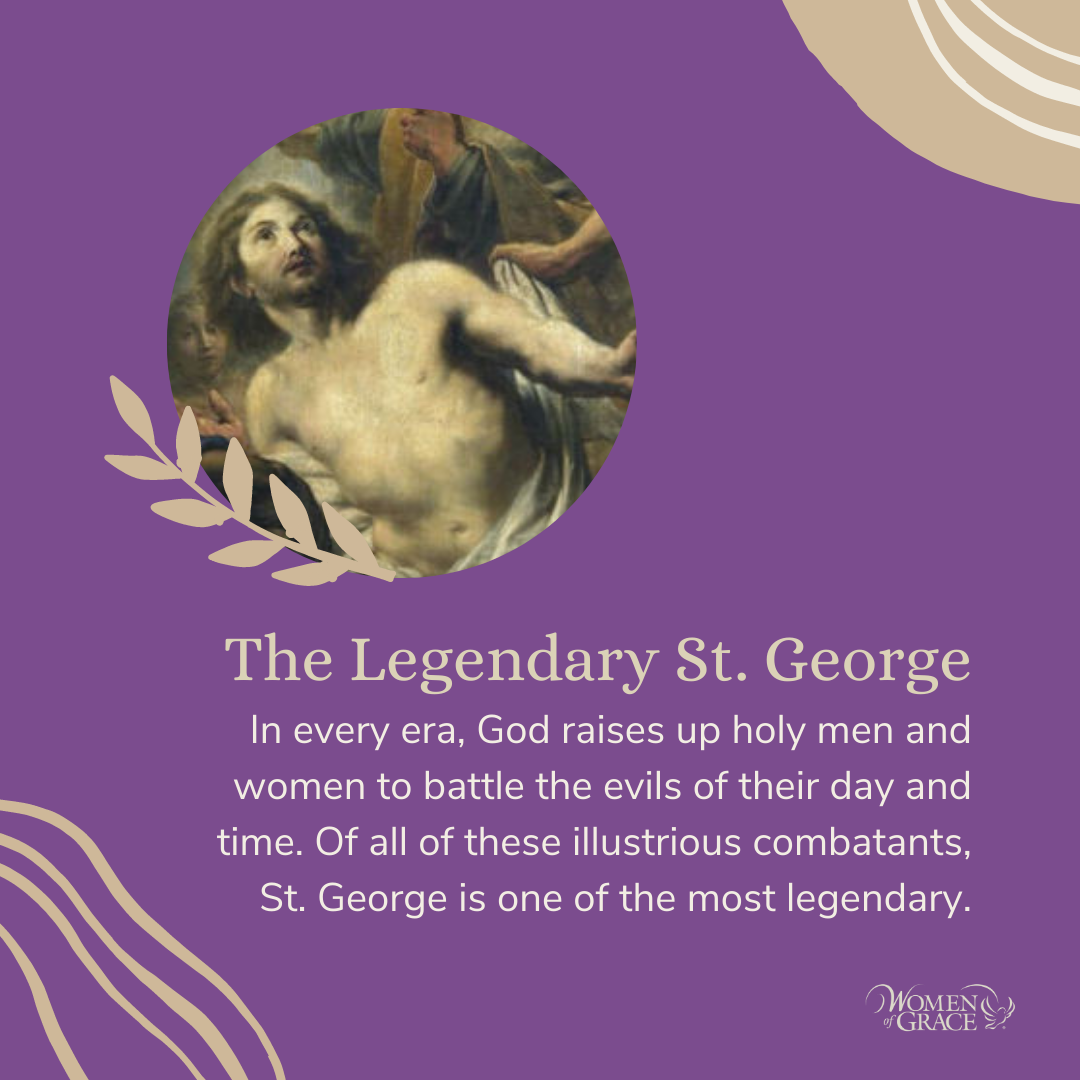
The story of St. George is the stuff of legend. He lived during the reign of the Emporer Diocletian from 275 – 303. He was a knight, a soldier, and a dragon slayer. This Friday is his feast day and how apropos that he is one of the saints featured in The Rosary: Your Weapon for Spiritual Warfare, the book we pull our weekly meditations from during our Women of Grace Rosary Crusade.
I hope you enjoy this short excerpt from the book:
In every era, God raises up holy men and women to battle the evils of their day and time. Often putting their lives on the line, they speak truth when it is likely to be rejected; they act with courage when many would run away; they press forward when the majority would pack it in. Of all of these illustrious combatants, St. George is one of the most legendary.
Known as the “great martyr” and “the dragon slayer,” it is believed he was born in Cappadocia in approximately AD 275. He became a soldier in the army and, though Christian, is said
to have been a favorite of the fiercely anti-Christian Roman Emperor Diocletian.
In AD 302, Diocletian issued an edict ordering the arrest of every Christian solider in his army. With his characteristic courage and zeal, George faced the emperor in the presence of his fellow soldiers and proclaimed himself a Christian. So fond of St. George was the emperor that he attempted to bribe the saint with gifts of land, money, and slaves, but St. George vehemently refused to deny Christ.
Thus began one of the most protracted campaigns of torture in the history of the Church. George was stretched on the rack, his flesh ripped with hooks, and salt poured into his open wounds. When that didn’t convince him to renounce Christ, he was pressed into a box that was pierced with nails, impaled on sharp stakes, and plunged into boiling water. Then the torturers attacked his head with a hammer. George remained firm in his faith…
Finally, after suffering scores of the cruelest punishments known to man, George knew his end was near. He quickly arranged for his earthly possessions to be distributed to the poor. He was beheaded on April 23 in the year 303.
The image of St. George slaying a dragon is symbolic of the life and death of this great warrior of God. Some claim the dragon symbolizes Satan, and the young “damsel in distress” shown in some images symbolizes God’s truth.
St. George is one of the Fourteen Holy Helpers, a group of saints venerated for the efficacy of their intercession. He is a great saint for our day and time, when we too need to slay dragons in our midst for the sake of God’s truth
Are you willing to be a Saint George of our day and time? Join us for our next Women of Grace Rosary Crusade. St. George, Great Martyr, pray for us.
Click the image below to join and if you’ve already registered, you should receive a reminder link directly from Zoom. Please be sure to share the information below with your friends and family!










